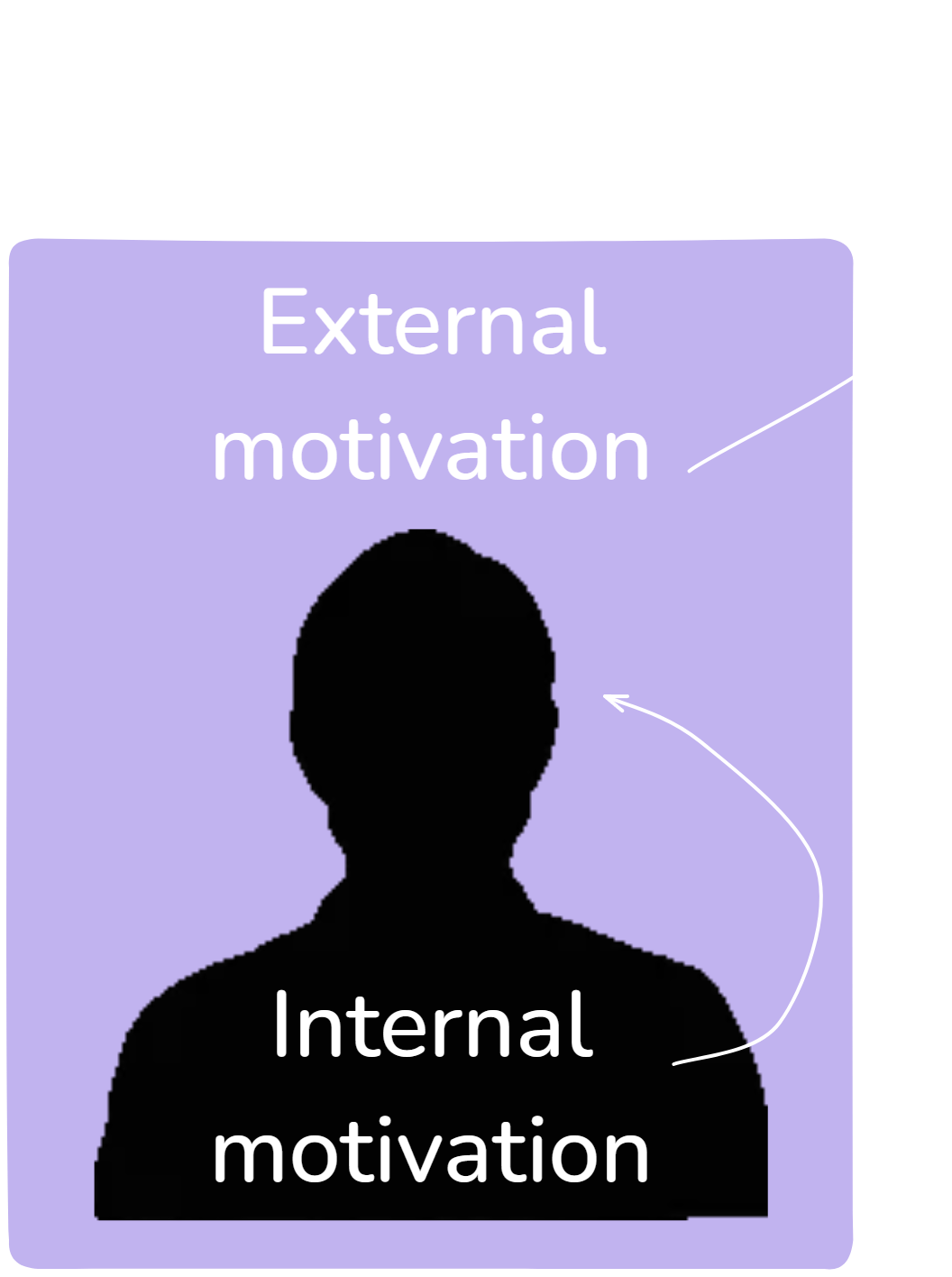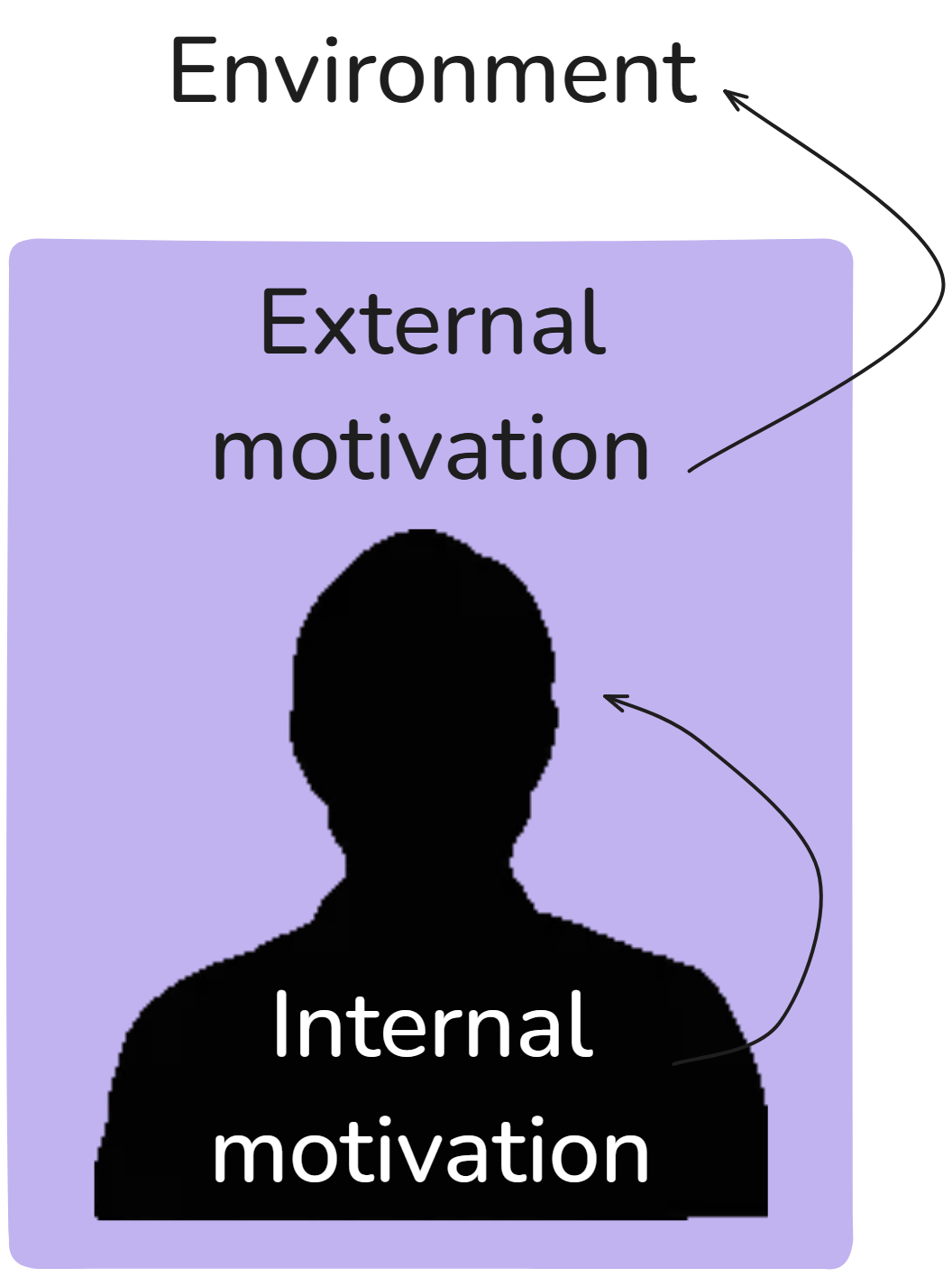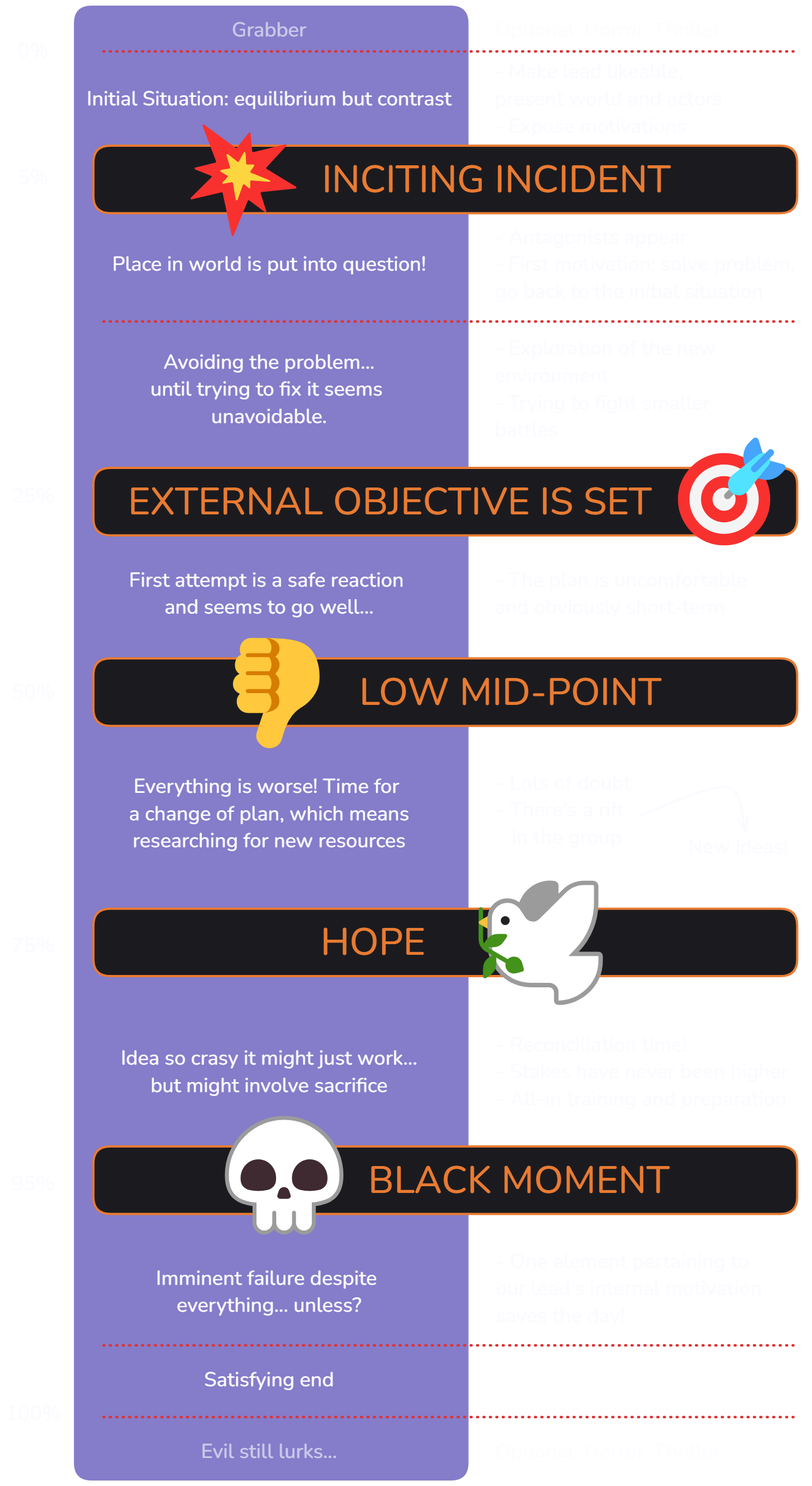Story shapes
Kurt Vonnegut
Story shape


According to Kurt Vonnegut, the shape of a story can be charted to represent its mood. Cinderella is the same overall story shape as the New Testament.
Multiplicity of interpretations
Hamlet is kickstarted with the main character speaking with the ghost of the former king, who reveals the queen and the king's brother conspired to kill him. BUT one can wonder:
- Is this really the king's ghost?
- Is he telling the truth?
Hamlet recognizes that there's no way to be sure, so he sets out to find a convincing confirmation, fails, and the bloodbath begins.
The shape of the story is radically different whether Hamlet is justified or not in his actions, ambiguity brings depth to the story themes.
Mata Haggis: plot structure
Motivations
Prerequisite
Just like we establish in Dialogue, characters have external goals and internal motivations; they move towards their goal but ultimately are led throughout the story to satisfy their internal motivation.
- External motivation applies to something they wish to change around them
Those motivations cause change!


Plot structure


Scene building
We build scenes according to our character's needs (to serve the story, do they need to learn anything? Do anything?).
In conclusion, per scene:
- OBJECTIVE: what lead wants to achieve
- CONFLICT: what prevents it from happening
- OUTCOME: what happens then (yes but, yes and, no and)
Debugging the player experience
- Is the player's objective clear?
- Is there escalating conflict, not just repetition?
- Do the outcomes meaningfully add to the mechanics and/or narrative?
- Was there change for the player or the character?
Tips
- The character can fail while the player succeeds
- Internal change is more powerful than external change
- Breaks between events build tension
